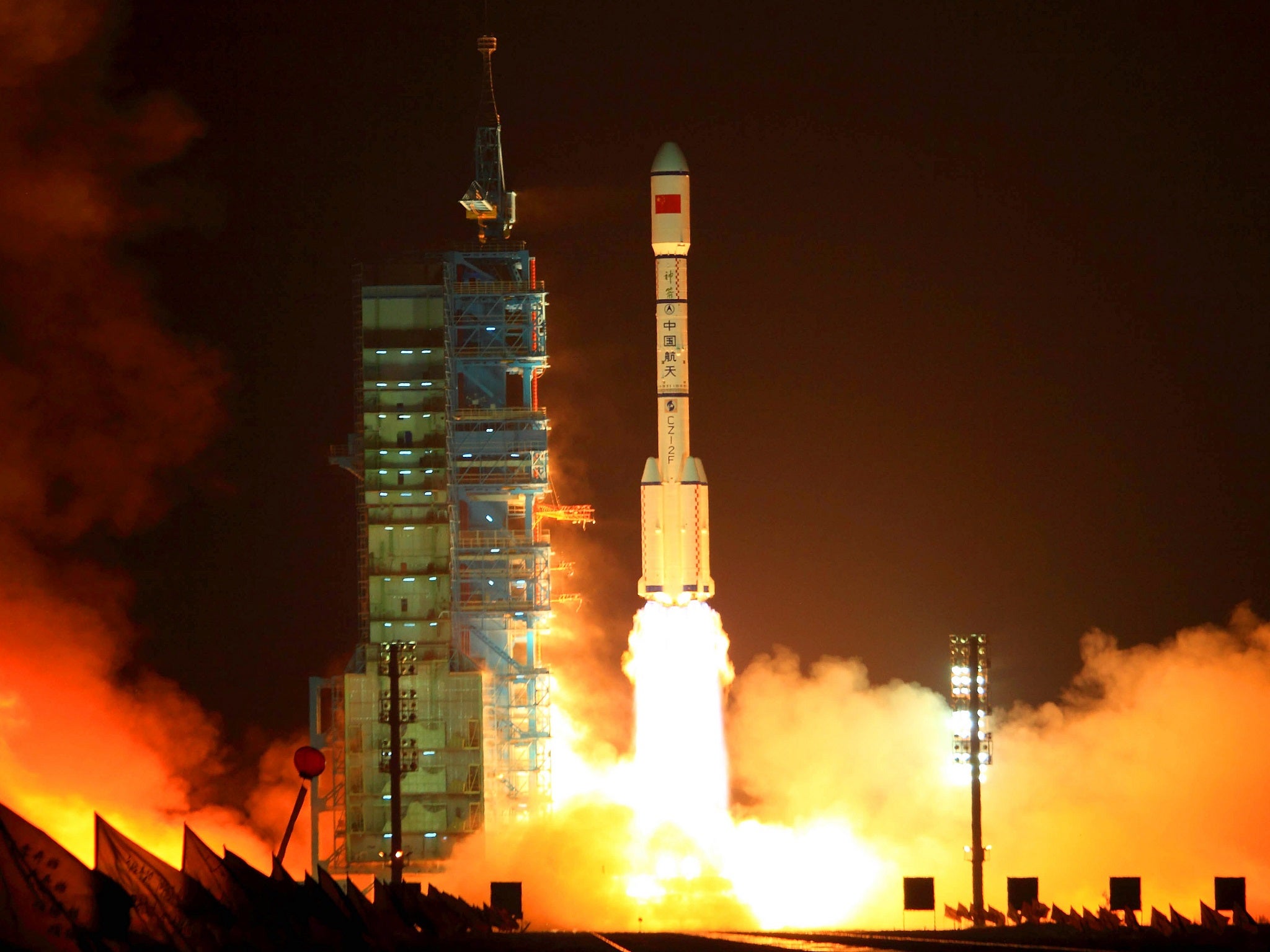China's space station 'out of control' and on crash course to Earth
‘Natural’ re-entry to atmosphere means it is almost impossible to know where debris will land

Your support helps us to tell the story
From reproductive rights to climate change to Big Tech, The Independent is on the ground when the story is developing. Whether it's investigating the financials of Elon Musk's pro-Trump PAC or producing our latest documentary, 'The A Word', which shines a light on the American women fighting for reproductive rights, we know how important it is to parse out the facts from the messaging.
At such a critical moment in US history, we need reporters on the ground. Your donation allows us to keep sending journalists to speak to both sides of the story.
The Independent is trusted by Americans across the entire political spectrum. And unlike many other quality news outlets, we choose not to lock Americans out of our reporting and analysis with paywalls. We believe quality journalism should be available to everyone, paid for by those who can afford it.
Your support makes all the difference.China’s first space station will meet a fiery end next year when the 8.5-tonne module comes crashing down to Earth, amid concerns authorities have lost control of the craft.
The Tiangong-1 space station was launched in September 2011 and currently orbits Earth at an altitude of 230 miles (370km).
But in July, amateur astronomers suggested China had “lost control” of the satellite, after Chinese media reported the country’s space agency had struggled to get in contact with it.
Officials have now confirmed that after four and a half years in orbit, Tiangong-1 (meaning Heavenly Palace) is expected to plummet to Earth in late 2017.
Speaking at a satellite launch for the space station’s successor in the Gobi Desert in northern China, officials from China’s manned space programme said the craft had ended its service in March this year having “comprehensively fulfilled its historical mission”.
Wu Ping, deputy director of the manned space engineering office said: “Based on our calculation and analysis, most parts of the space lab will burn up during falling.”
According to Space.com the less than precise landing time indicates the operators had lost control of the unit, as if they were still able to communicate with it, they could steer it to “a guided re-entry over an empty stretch of ocean at a specified time”.
Like other lost satellites, it’s likely that the freefalling station will burn up on its way back into Earth and come back down in smaller chunks of molten metal rather than with a big crash.
However, some denser engine parts are unlikely to burn up completely and could potentially cause problems on the ground.
Harvard astrophysicist Jonathan McDowell told the Guardian the announcement suggested the doomed craft would now re-enter the Earth’s atmosphere naturally, making it near impossible to predict where any debris will fall.
“You really can’t steer these things,” he said. “Even a couple of days before it re-enters we probably won’t know better than six or seven hours, plus or minus, when it’s going to come down. Not knowing when it’s going to come down translates as not knowing where it’s going to come down.”
“There will be lumps of about 100kg or so, still enough to give you a nasty wallop if it hit you,” he added.
He said that even small changes in atmospheric conditions would be enough to nudge the craft “from one continent to the next”.
But according to Chinese news agency Xinhua, Ms Wu said the space station’s re-entry was “unlikely to affect aviation activities or cause damage to the ground”.
“China has always highly valued the management of space debris, conducting research and tests on space debris mitigation and cleaning,” Wu said.
Tiangong-2, China’s replacement for the space lab, was successfully launched aboard a Long March 2F rocket on 15 September from the Jiuquan Satellite Launch Centre in north west China.
Join our commenting forum
Join thought-provoking conversations, follow other Independent readers and see their replies
Comments